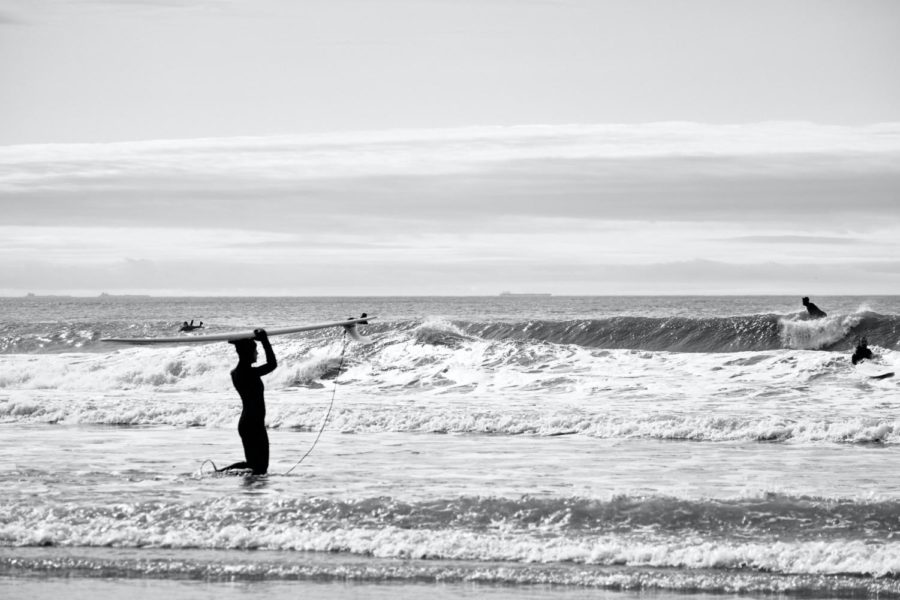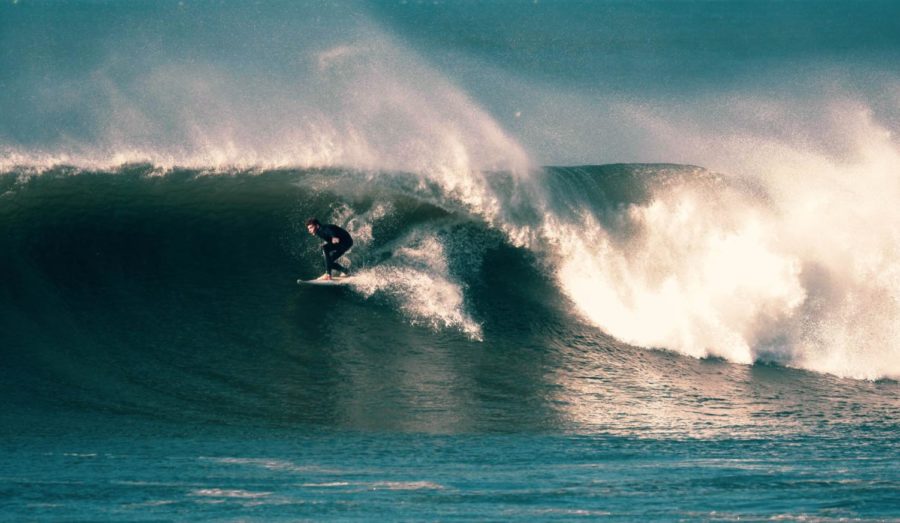Surfing at Rockaway Beach in New York
A look inside Rockaway Beach’s famous surfing culture.
Here are surfers at Rockaway Beach in Queens.
As the weather and the A train approach the high 80’s – these being the Queens stops – the appearance of a surfboard on board the Rockaway Park-bound train becomes all the more commonplace. Folded under arms or in between legs, these typically eight-foot foam decks have no room to breathe until finally the A reaches Broad Street Channel. At this point, all beach-seekers shuffle out of the train and into a shuttle at the same station, and within fifteen minutes, they will have surf.
Rockaway Beach in Queens, New York is the only legal surfing spot in New York City. It is also renowned for its world-class waves and fanatic surf culture. This makes sense considering that prime surfing conditions occur between September and April each year, when the water averages in the mid 40’s. A swimming pool, for reference, measures 77°F, and a hot tub 100°F, so only those with incredibly thick skin and access to a $400 wetsuit have a chance at braving such bitter waves.
On a pouring day in late April 2023, I found myself on the shores of Rockaway Beach. My jeans were soaked and coated in sand, and the wind would not leave me alone. Through my teeth I cursed the place and my own lack of preparation, and upon touching the water objected to the idea that anyone could surf in such conditions. Then I turned around and met someone who could: a Rockaway local named Jake Scott.
“I moved to Rockaway from the city during the COVID-19 pandemic, and it’s been the best decision I ever made,” Scott told me. “One thing you have to know about the [surf] culture is that no surf spot is the same. Depending on the texture of the ocean floor, determined by the sand, rocks and reef which sit on it, the wave breaks in a different shape. This, combined with the tide, wind direction, current direction, and a whole bunch of other features have a dramatic effect on the type of surf you’re bound to get. The great thing about living here is that I have endless hours to just study the beach and understand the patterns of its waves. This makes me a better rider, but it also allows me to appreciate the surf more.”
More than anything else, surfing derives its popularity due to its meditative aspect; there is an inherent romance to the sport. Sublimated in nature, with your chest pressed on the mid-section of the board, you watch the horizon for the next swell of water to ride. If the surfers likes its shape, they will paddle out towards the shore, anticipating to meet it. Rising with the white water, and with two feet planted on a wet waxed surface, they steer using their center of gravity into the break of the wave which is parallel to the shore and horizon.
The overall objective of surfing is to position yourself continuously on the brink-part of the wave where it curls in on itself (see the photograph below for reference). The even more sought after objective of surfing is to slot yourself right under the curl, called ‘getting covered up’ or ‘barreling’ (consult the second image below for reference). I would not know what this feels like since it is an expert move, but my friend Levi Miller ’24 who grew up surfing in the Hamptons said, “I think you kind of just feel the power of the ocean, because for a brief bit you can just get sucked into the lip of the wave. It’s like you’ve beaten Mother Nature in a sense.”
Scott said on the topic, “Barrelling, for me, is definitely the most rewarding part of the sport. There is so much to overcome. If you do not read the wave perfectly, you get sucked into the barrel. These are typically really large, strong waves that break under reefs. Not only will you be sucked into the wave if you mess up the barrel, but you also run the risk of being held under the wave, where you can’t breathe for a long period of time, or crashing into the reef, which can hurt and potentially kill you. A good barrel is definitely earned.”
Scott forgot to mention the most divisive of obstacles in surfing, which surfers call ‘kooks.’ A kook is an inexperienced surfer whose reckless behavior puts other surfers’ safety in jeopardy. Examples include cutting in front of someone else or letting your board be shot out from under you. If you are interested in learning surfing, you must realize that the sport is full of complex procedures to master, and it is not something that you can wing on your first try. Avoid the embarrassment of being called a kook, and learn surfing the proper way.
If this sounds good to you, here is how to start surfing at Rockaway:
Go to Locals Collective Cafe and get a coffee. This is a cafe run by surf instructors, giving you a perfect opportunity for you to get a sense of the culture. When you’re done with this, you can book a lesson at the cafe. Two-hour privates are $125, with board and wetsuit included. Ideally you should be able to learn how to pop up onto the board by the end of this session, provided your instructor is pushing you into your own waves. This first lesson is all about learning how to balance. Sadly, you will need more than one day of lessons to become a self-sustainable surfer.
On your second visit, you will ideally be good enough to learn to paddle into your own waves.
The task requires you to look out into the horizon and recognize whether the wave behind you will break to the left or right. You will learn to look for the one that appears to have a good shape and is breaking in a direction that allows you to catch it.
Timing is crucial. Start paddling toward the shore when you see the wave you want to catch starting to form and build up momentum. Paddle hard to match the speed of the wave.
Use a combination of arm and leg paddling to generate speed. Cup your hands and reach forward, extending your arms into the water. Kick your legs in a flutter kick motion to provide additional propulsion.
As you paddle, angle your board toward the direction the wave is breaking. This helps you align yourself with the wave and increases your chances of catching it.
As the wave approaches, increase your paddling speed to match its velocity. Aim to be just in front of the wave as it starts to break.
Once you feel the wave lifting your board, transition into a pop-up position. Place your hands flat on the board near your shoulders and push your upper body off the board. As you do this, bring your back foot forward and place it on the tail pad while swinging your front foot under your body to a stable surfing stance.
Once you’re on your feet, focus on maintaining balance and control. Adjust your weight distribution and use your arms for stability. Look ahead to anticipate the wave’s movements and make any necessary adjustments.
And there you have it: you can surf. The moment you finally get in the groove, you will never want to stop.
“I think you kind of just feel the power of the ocean,” said Levi Miller ’24, because for a brief bit you can just get sucked into the lip of the wave. It’s like you’ve beaten Mother Nature in a sense.”
Yasmine Salha is an Editor-in-Chief for ‘The Science Survey.’ She is a proponent of accessible journalism, and loves to simplify complex and controversial...


